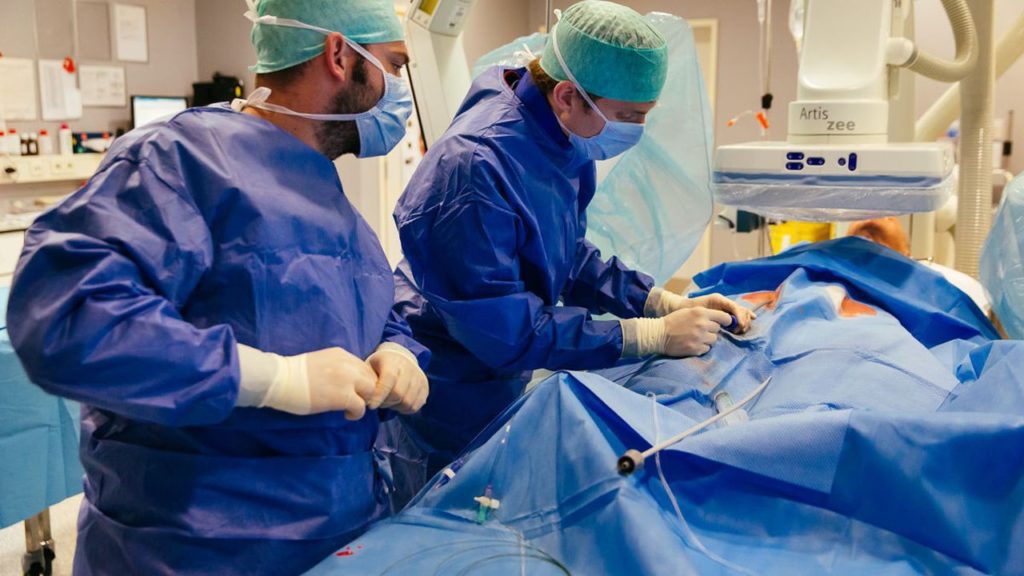This week, surgeons at the university hospital in Leuven implanted a new type of wireless pacemaker in a patient. The new generation appliance will make pacemaker technology available to twice as many people as before, the university said.
The device is a new generation of the Micra pacemaker, which has been in use at UZ Leuven since 1985. The tiny device is implanted in the heart through an incision in the groin, and reduces the number of post-operative complications by about 63%.
The Micra is only suitable for about 16% of patients who require a pacemaker, however.
“The first generation of the device only measured the heart activity in one ventricle of the heart,” explained cardiologist Dr Christophe Garweg.
The heart is divided into left and right atria, above the left and right ventricles. Blood comes from the body’s tissues to the right atrium, passes to the right ventricle, and is pumped to the lungs to be replenished with oxygen.
It then comes back to the left atrium and passes to the left ventricle, from where it is pumped back out through the body.
The whole system works via a system of valves ensuring the blood can only flow in one direction. The rhythm is determined by electrical impulses which govern the opening of the atria to allow blood in, and the contraction of the ventricles to push blood out.
A pacemaker is an electronic device that is used when a patient's heart rhythm is too low (known as bradycardia) and the heart is unable to pump enough oxygenated blood through the body.
Those patients experience difficulty during physical exercise: they faint, tire quickly and run out of breath more quickly. A pacemaker replaces the heart's natural rhythm thanks to electrical impulses.
Patients that need to have the heart activity in the atrium measured as well as the ventricle, did not previously qualify for the Micra.
“With this new type of pacemaker, we can also treat patients with a complete interruption of the heart activity between the ventricle and the atrium”, Dr Garweg said.
The new model is suitable for use with 40% of patients, more than twice as many as before.
“The new pacemaker can measure heart activity in the atrium and coordinate the electrical activity between atrium and ventricle,” Dr Garweg said. “This restores normal heart rhythm and improves the patient's quality of life. The mini-pacemaker operates more or less like a conventional pacemaker, which is implanted under the skin and connected to the heart with two leads.”
UZ Leuven was actively involved in the development of the new pacemaker. At the moment it is only being used in the context of clinical trials. Later, its use will be extended.
The new pacemaker has already been implanted in two patients. Both procedures went according to plan, and both patients are doing well, the hospital said.
Alan Hope
The Brussels Times

